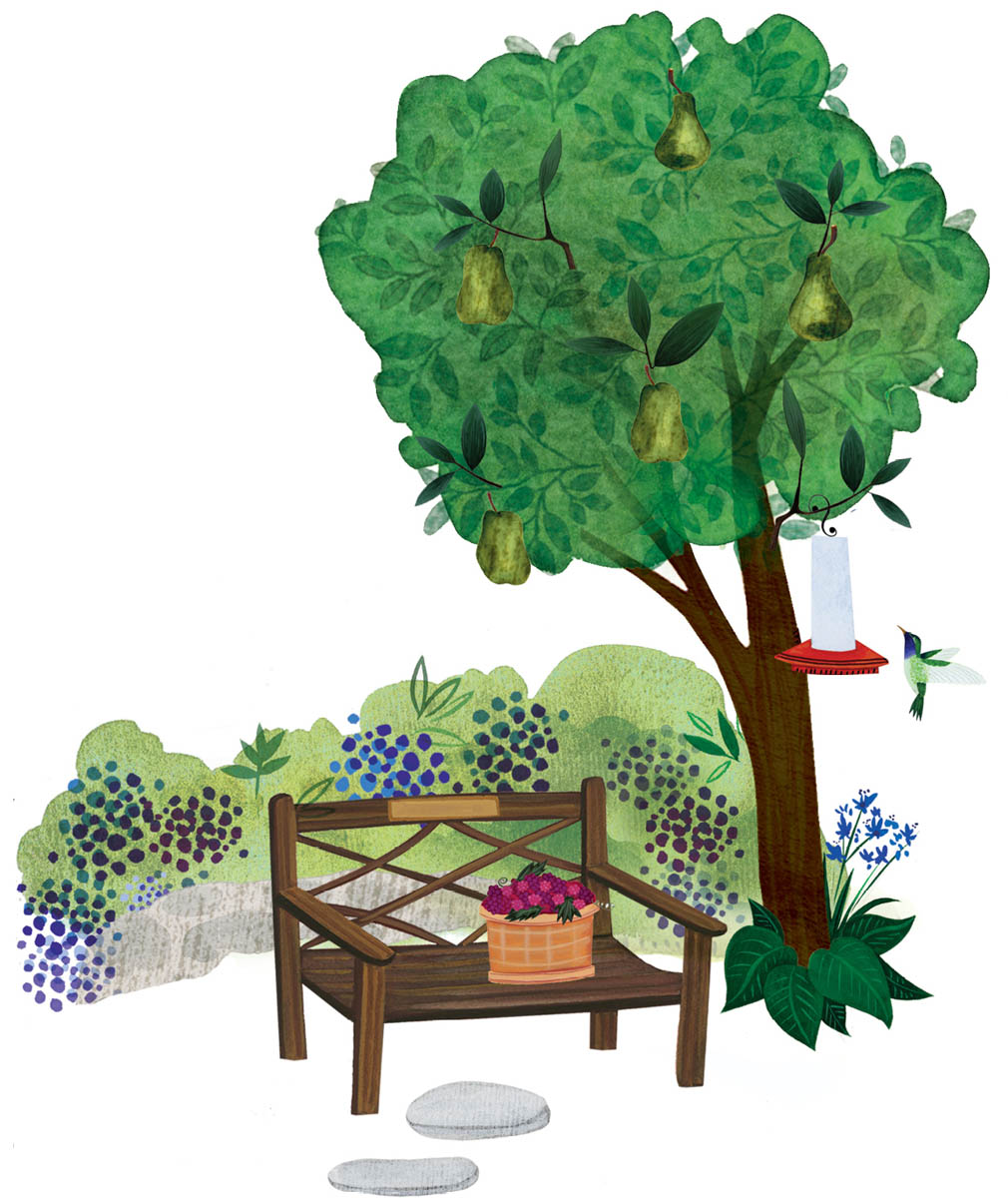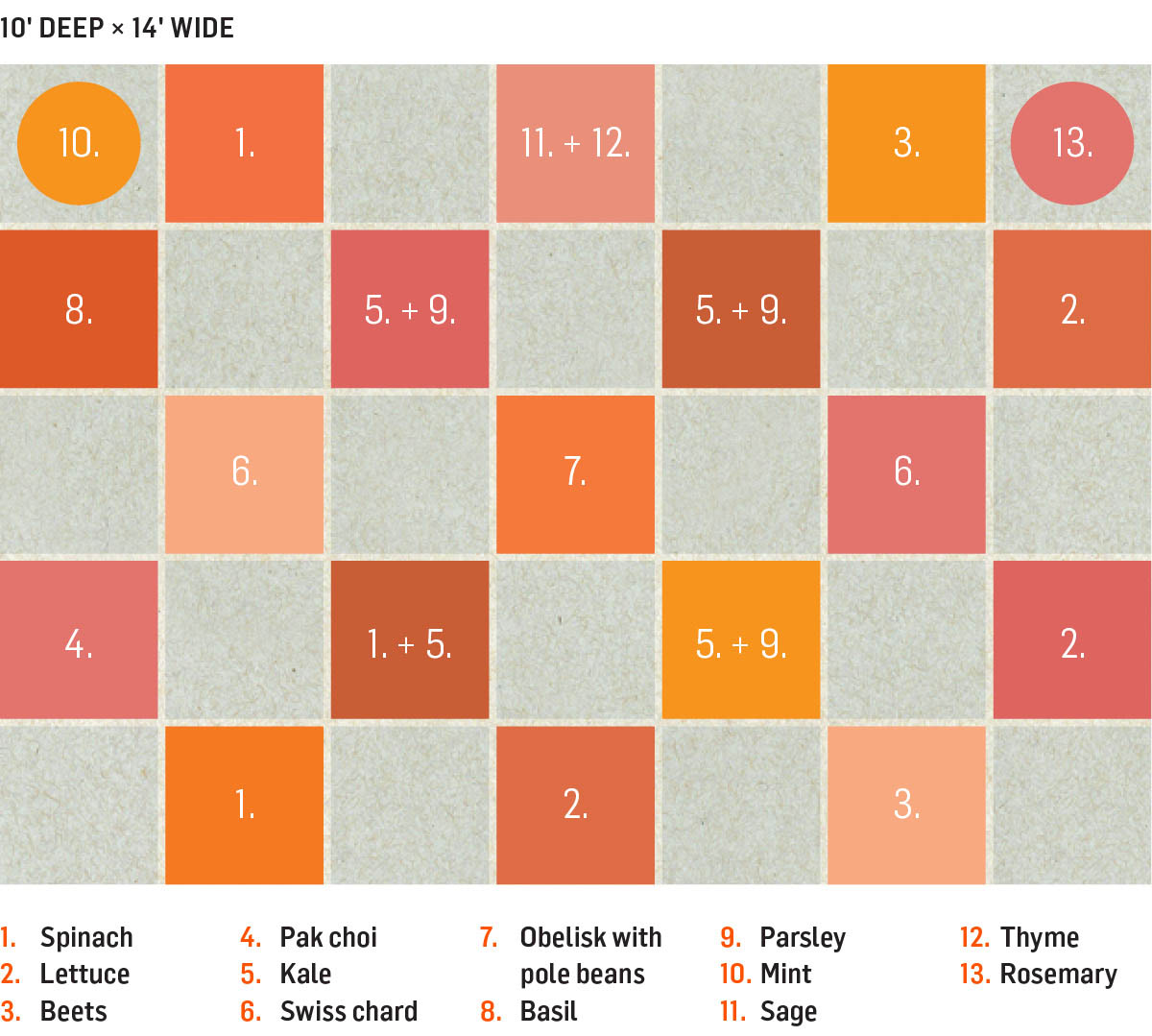
Marjorie Harris knows shade, and she understands the challenges that go along with trying to grow food in reduced light. Her design includes the best edibles for less-than-ideal light conditions, and Marjorie offers a handful of sneaky ideas to help ensure a decent harvest.
Marjorie Harris lives and gardens in downtown Toronto, where she has tended the same plot since 1967. Over the years, maturing trees have drastically reduced the amount of light her garden receives, and since she turned into an “obsessive gardener” in the 1980s, space has also become rather scarce. When she didn’t have enough sunlight to grow the same vegetables she had been growing for years, she had to find new edibles. That’s when she discovered that many vegetables and herbs will still grow and produce a harvest when shaded slightly.
Of course, there are varying degrees of shade, and those with full or deep shade will find it difficult to bring any type of edibles to a harvestable stage. Still, there are possibilities for these gardeners as well. “Even if you’ve got what seems to be a hopeless sun situation, you can grow some vegetables,” Marjorie says, advising a light-challenged gardener to stick to leafy crops like kale, spinach, leaf lettuce, and Chinese cabbage, which can still produce a harvest with just 3 to 4 hours of sunlight. “You can put these crops together and make something absolutely glorious — a tapestry of color and texture.”
Tips for working with shade. In dappled or partial shade, gardeners will have more luck, but they should still look for a bright spot to site their gardens. If possible, choose a location with a nearby shed or wall that can be painted white to reflect light into the garden. Rich, healthy soil will also help give edibles a head start, so loosen and amend your soil well before planting. If nearby trees are shading your garden, their roots may be stealing nutrients and water from your vegetables; in that case, raised beds might be a good idea.
Creating the checkerboard. Marjorie’s plan is extremely flexible in that you can place the plants wherever you like, and it can be quickly installed in a large or small yard. To create the checkerboard, Marjorie has staggered 2-foot-square patio stones, set in sand, with 2-foot-square garden plots.
Picking stones. When selecting stones, keep in mind that light-colored ones will reflect sunlight back to the plants, giving your shady garden a boost. This formal pattern offers visual interest to the garden, but Marjorie is quick to point out that the stones also absorb heat, extending the growing season and creating a small microclimate.
Between the stones, the tidy planting squares allow you to focus your gardening efforts on a small area, making seeding or transplanting a snap. In addition, when growing in such compact squares, the decorative foliage of vegetables such as Swiss chard and dinosaur (‘Lacinato’) kale can be fully appreciated. In the middle of the garden, an obelisk for pole beans or peas is a practical choice, adding vertical interest and support for vining crops.

Producing fruit in the shade. To grow fruiting crops like baby eggplants and cherry tomatoes even in light shade, consider planting in large pots that are positioned in the sunniest parts of the garden. Marjorie notes cherry tomatoes will mature more quickly than large-fruited types and be more likely to produce a harvest, and “baby eggplant is delicious and colorful, but it needs at least 6 hours of sun per day to bear a decent crop.” Try ‘Little Fingers’, ‘Listada De Gandia’, or ‘Fairy Tale’.


1. Spinach
2. Lettuce
3. Beets
4. Pak choi
5. Kale
6. Swiss chard
7. Obelisk with pole beans
8. Basil
9. Parsley
10. Mint
11. Sage
12. Thyme
13. Rosemary